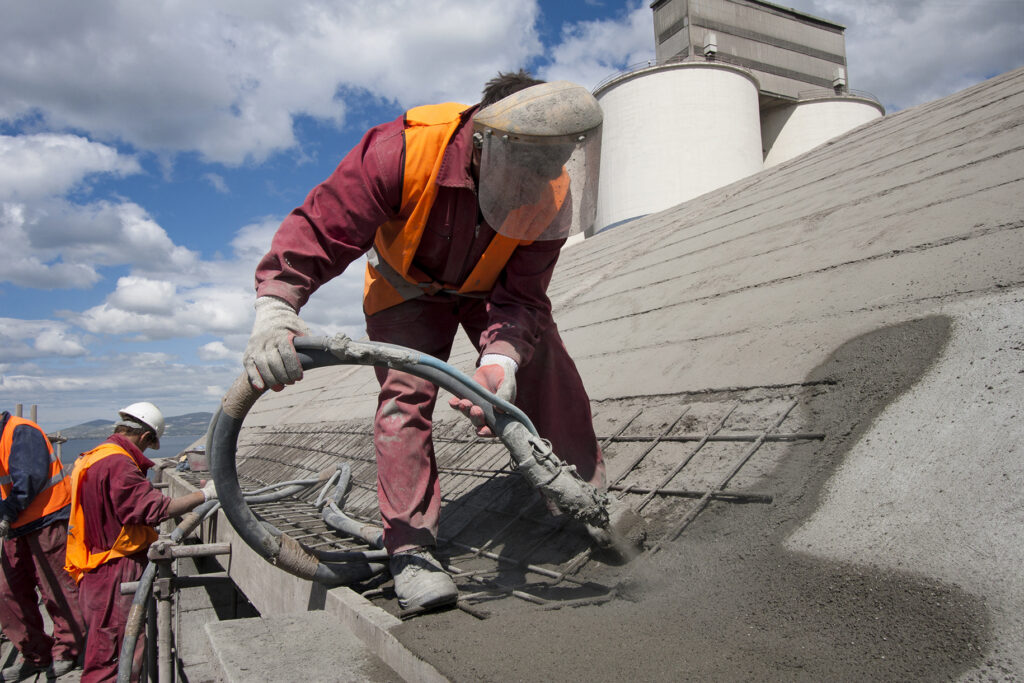Building the Future: Sustainable Practices in Concrete Restoration and Repair
by siteadmin

Concrete, the cornerstone of modern construction, provides the foundation for our cities, highways, and infrastructure. However, as concrete structures age, they often require restoration and repair to maintain their integrity and functionality. In today’s world, where environmental concerns are paramount, it’s crucial to adopt sustainable practices in concrete restoration and repair. By prioritizing eco-friendly solutions, we not only extend the lifespan of our infrastructure but also minimize our environmental footprint. In this blog post, we explore the innovative sustainable practices reshaping the landscape of concrete restoration and repair.
Recycled Materials:
One of the most effective ways to reduce the environmental impact of concrete repair is by incorporating recycled materials into the restoration process. Recycled aggregates, such as crushed concrete or reclaimed asphalt pavement, can be used as substitutes for natural aggregates in concrete mixtures. Additionally, recycled fly ash, slag, and silica fume can be utilized as supplementary cementitious materials, reducing the carbon footprint of concrete production. By diverting waste materials from landfills and minimizing the extraction of virgin resources, the use of recycled materials promotes circularity and sustainability in concrete repair.
Low-Carbon Concrete:
Traditional concrete production is a significant contributor to carbon emissions due to the high energy requirements of cement manufacturing. However, advancements in concrete technology have led to the development of low-carbon and carbon-neutral concrete formulations. These formulations utilize alternative binders such as geopolymers or supplementary cementitious materials with lower embodied carbon. Additionally, incorporating innovative admixtures and optimizing mix designs can further reduce the carbon footprint of concrete repair while maintaining performance and durability.
Bio-based and Renewable Materials: Another sustainable approach to concrete restoration and repair involves the use of bio-based and renewable materials. Biopolymers derived from plant-based sources, such as cellulose or lignin, can be used as additives to improve the workability and durability of concrete mixtures. Furthermore, bio-based resins and adhesives offer environmentally friendly alternatives to conventional synthetic binders for structural strengthening and bonding applications. By harnessing the power of nature, we can create resilient and sustainable solutions for concrete rehabilitation.
Energy-Efficient Repair Techniques: In addition to sustainable material choices, energy-efficient repair techniques play a crucial role in reducing the environmental impact of concrete restoration. High-pressure water jetting, abrasive blasting, and hydrodemolition are eco-friendly methods for removing deteriorated concrete without the use of harmful chemicals or excessive energy consumption. Furthermore, cold-applied repair materials and rapid-setting mortars minimize the need for energy-intensive curing processes, accelerating the repair timeline and reducing overall energy usage.
Life Cycle Assessment and Maintenance Strategies: A holistic approach to sustainable concrete restoration involves considering the entire life cycle of the structure, from construction to demolition. Conducting life cycle assessments (LCAs) allows engineers to evaluate the environmental impacts of different repair strategies and materials over the structure’s lifespan. Additionally, implementing proactive maintenance strategies, such as regular inspections, cleaning, and protective coatings, can extend the service life of concrete structures and reduce the frequency of major repair interventions, thereby minimizing resource consumption and environmental burdens.
Sustainable practices are no longer a luxury but a necessity in the realm of concrete restoration and repair. By embracing recycled materials, low-carbon concrete formulations, bio-based alternatives, energy-efficient techniques, and proactive maintenance strategies, we can minimize the environmental footprint of concrete rehabilitation while ensuring the long-term resilience and durability of our infrastructure. As stewards of the built environment, it is our responsibility to adopt sustainable practices that preserve the planet for future generations while building a better, greener future.
Concrete, the cornerstone of modern construction, provides the foundation for our cities, highways, and infrastructure. However, as concrete structures age, they often require restoration and repair to maintain their integrity and functionality. In today’s world, where environmental concerns are paramount, it’s crucial to adopt sustainable practices in concrete restoration and repair. By prioritizing eco-friendly solutions,…
Recent Posts
- Roofing Company Savannah Sheds Light on the Lifespan of Roofs: How Long Should a Roof Last?
- Cost of Installing a Pool in Cape Coral, Florida: A Rough Guide
- Overland Park KS Painters Provides Insight: Essential Questions to Ask Your House Painter
- Is Stamped Concrete Cheaper than Regular Concrete? Debunking Myths with Columbus Stamp Concrete
- New Orleans Concreters Advocates for Stamped Concrete Driveways as the Ultimate Choice for Durability and Style
